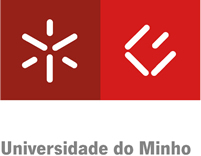Do Instituto Histórico e Geográfico Brasileiro ao Brasil de Todos: Identidade Nacional e sociedade no Brasil independente
From Brazilian Historical and Geographic Institute to Brazil of All: National Identity and Independent Society in Brazil
Keywords:
Brazil, Nationalism, Identity, Society, miscegenationAbstract
Identity and nationalist themes have been revisited frequently, notably in the last decade. In Brazil, the discussion about social formation based on the triad formed by the white, the Indian (the native) and the black has always been present, either to forge the idea of a mestizo country or to contest the inequality in the representation of the roles by each of these formative elements. The current prominence given to the country at the international level, for its political articulations and also for its economic importance in a recent context of crisis, reinforces the value of elements such as the strength, unity and cordiality of the Brazilian people. In this sense, the historical construction of the discourse of the valorization of miscegenation that results today in an exalting political order of equality and tolerance, based on our superior legal system - The Constitution of the Republic - and also by a range of laws and policies that not only illustrate the reality of the country, but it turns its gaze back to the past and to the cracks and inaccuracies that coined the idea of Brazil's national identity. The article in question revisits a crucial moment for the construction of the Brazilian identity discourse - the creation of the Brazilian Historical and Geographic Institute - highlighting the constituent elements of the development of an explanatory discourse of the Brazilian social formation from the meeting of its three founding peoples and the the exaltation of miscegenation with the civilizing protagonism of the white, articulating the reflexes of this ideal founding of the Brazilian Nation for citizenship, for the articulation of social movements and for the democratic construction of the country, which began in the 1980s.
Resumo
As temáticas identitárias e nacionalistas têm sido revisitadas com frequência, notadamente nesta última década. No Brasil, a discussão acerca da formação social alicerçada na tríade formada pelo branco, pelo índio (o nativo) e pelo negro sempre se fez presente, seja a forjar a ideia de um país mestiço, seja para contestar a desigualdade na representação dos papeis por cada um desses elementos formadores. O destaque atual conferido ao país no âmbito internacional, por suas articulações políticas e também por sua importância económica num contexto recente de crise, reforçam a utilização valorativa de elementos como a força, a união e a cordialidade do povo brasileiro. Neste sentido, a construção histórica do discurso da valorização da miscigenação que resulta hoje em uma ordem política exaltadora da igualdade e da tolerância, alicerçadas por nosso ordenamento jurídico em seu nível superior - A Constituição da República - e também por uma gama de legislações e políticas públicas, não só ilustram a realidade do país, mas faz com que o mesmo volte os seus olhares para o passado e para as fissuras e imprecisões que cunharam a ideia da identidade nacional do Brasil. O artigo em questão revisita um momento crucial para a construção do discurso identitário Brasileiro - a criação do Instituto Histórico e Geográfico Brasileiro - realçando os elementos constituintes do desenvolvimento de um discurso explicativo da formação social brasileira a partir do encontro dos seus três povos fundadores e da exaltação da miscigenação com o protagonismo civilizador do branco, articulando os reflexos deste ideal fundador da Nação Brasileira para a cidadania, para a articulação de movimentos sociais e para a construção democrática do país, iniciada nos anos 80.
Downloads
Downloads
Published
How to Cite
Issue
Section
License
Authors must be sure that they have permission to reproduce copyright material, prior to submitting their articles to this Journal.
Authors must secure permission if they have permission to reproduce figures, tables, or any extract from the text of another source. This applies to direct reproduction as well as to any derivative reproduction.
In assigning copyright, authors retain their right to use their own material elsewhere, provided that the Journal is acknowledged as the original place of publication, and the Editorial Team is notified in writing in advance.
Further information on copyright policy please contact info@perspectivasjournal.com








